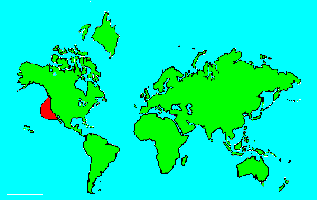SPECIES INFO
Big skate (Raja binoculata) is found in the eastern Pacific from Alaska south to about central Calfironia. However, it has been taken off Baja California. This skate can reach over 8 feet in length, but most individuals are less than 6 feet long. There is a large dark centered eyespot in the center of each pectoral fin, plus numerous smaller white spots.The skates (Family Rajidae) contain a large group of species. Some estimates place the number at about 200 species. There are about 15 different genera in this family. The genus Raja contains more than 100 species. There are about 10 species of skates near western North America, and another 12 near eastern North America. There are about 35 species known in the vicinity of Australia. The skates have large winged pectoral fins that connect in front of the head. These pectoral fins can be undulated to provide smooth or fast motion.
Rajiformes contains the skates, guitarfishes, and thornbacks. There are perhaps twenty-five known species. The following are well-known:
Thornback - Platyrhinoidis triseriata - California
Brazil Guitarfish - Rhinobatos horkelli - S. Atlantic
Atlantic Guitarfish - Rhinobatos lentiginosus - Worldwide
Shovelnose Guitarfish - Rhinobatos productos - California
Mediterranean G-fish - Rhinobatos rhinobatos - East Atlantic
Banded Guitarfish - Zapteryx exasperata - Pacific
Sharks and rays (Elasmobranchi), cartilaginous fishes, deserve to be a class separate from the normal fish, in that they do not have a bone skeleton but rather a cartilage skeleton.
Fertilization is internal in this class which also separates them from the bony fish class. Although there are a few fresh water species, the majority of the species in this class are found in salt water. As of 2005, there were about 500 known species of sharks and about 600 known species of rays.
David Ebert, author of a recent book on sharks, rays, and chimaeras of California, counts a total of 988 described species in the class with about 150 additional species awaiting scientific description. He breaks down the described species to 410 species of sharks, 543 species of rays, and 35 species of chimaeras.
Many species of sharks face an uncertain future, as the Chinese purchase shark fins to make shark fin soup. It was estimated that 100 milllion sharks are killed each year for this purpose. However, recent estimates indicate the Chinese are reducing their consumption of this exotic soup.
Backboned Animals (Phylum Chordata) are the most advanced group of animals on earth. These animals are characterized by having a spinal cord or backbone. Most members have a clearly defined brain that controls the organism through a spinal cord. Fish, amphibians, reptiles, birds, and mammals are in this phylum.
Currently, some taxonomists believe that the fish should be divided into two groups (sharks and regular fishes) and that there are some other primitive groups in the phylum such as hagfish or lampreys.
Animal Kingdom contains numerous organisms that feed on other animals or plants. Included in the animal kingdom are the lower marine invertebrates such as sponges and corals, the jointed legged animals such as insects and spiders, and the backboned animals such as fish, amphibians, reptiles, birds, and mammals.

